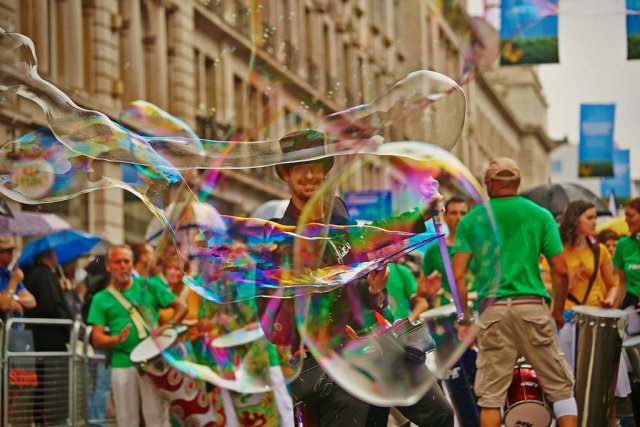Agora Kizomba is an English-language African and Latin dance magazine focused on northern European countries. It is published twice a year.
We interviewed Eva Ramírez director and editor-in-chief at Agora Kizomba
- Hello, nice to meet you
- Hello, nice to meet you too
What makes your magazine different from others on the market?
Agora Kizomba is a biannual magazine that aims to report on everything related to Afro-Latin rhythms.
It is necessary to distinguish between the blog and the magazine. The blog reports on events, hits, and current news, while the magazine is more focused on dealing with issues relating to dance and African cultures in more depth.

Your magazine contains several sections such as dance tips, trips and events among others, but there is one that has particularly caught my attention, “Kizomba at first sight”, could you explain what it consists of?
Afro-Latin rhythms are still not very popular in northern Europe, and it occurred to me that some famous artists who have had no contact with these rhythms would watch several videos of kizomba, semba or kuduro and comment on my readers’ first impressions.
When I discussed it with my collaborators, some of them were not very convinced by this idea, but finally it is one of the sections that are having a better reception by the readers.
What is Agora Kizomba’s mission?
As our motto says “#sayyestoconnection”, the mission of this magazine is to connect people and cultures alike.
How do you perceive the Afro-Latin dance scene in Northern Europe?
Kizomba, semba, kuduro, etc. are still not as popular dances as salsa or bachata, but there is a growing interest and more and more events are being held.
Which of the artists you interviewed impressed you the most?
I’m very grateful to all the great artists I’ve had the opportunity to interview. I would like to thank Nelson Freitas, Mika Mendes, GianCarlo Pioli, Jesper Hagelskær Paasch, Jonas Flodager Rasmussen, Afro Celt Sound System, Tobias Trier, Florin Opritescu, Jazz musician Morten Jagd Christensen, and others just as important that I had the pleasure of interviewing.
Having said that, I was very impressed by Rasmussen’s reaction when he watched the kizomba dance videos, he had never seen anything about this dance before and he was very surprised.

Could you tell us a little bit about your collaborators?
My sister Rocío Ramírez Gámez designed the cover of issue 1 of the magazine. In addition to being an illustrator, she is a writer and has written three novels.
Manué Luaces is the chief supervisor of the magazine. He makes sure everything is right. His criticisms are very forceful and he never overlooks any detail.
Henrik Sandner is a Danish artist who collaborated in designing the cover of issue 2. He has exhibited in cultural centers, galleries, etc in Denmark, Germany and Greece.
Juan Carlos Herrezuelo Calderón “Anhelo” – He is a young painter who has also collaborated with his designs. During his artistic career, Anhelo has participated in several painting contests, receiving several prizes and recognitions.
What encouraged you to start writing?
I like writing since I was little, almost since I learned to do it, but when I started writing more seriously was due to my membership in the Z.E.A. association. (Zoziedá pal Ehtudio´el Andalú) – Society for the Study of the Andalusian Language, is an association dedicated to the study of the linguistic heritage of Andalusia.
What other projects do you have related to Agora Kizomba?
I would like to create a collection of ecological dance bags with exclusive designs.








